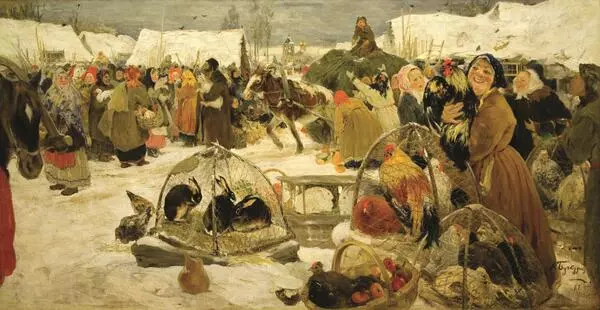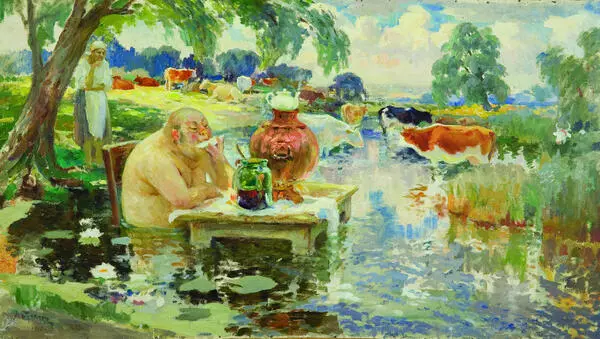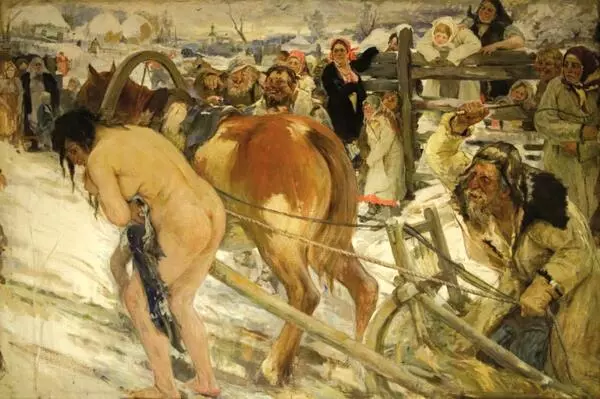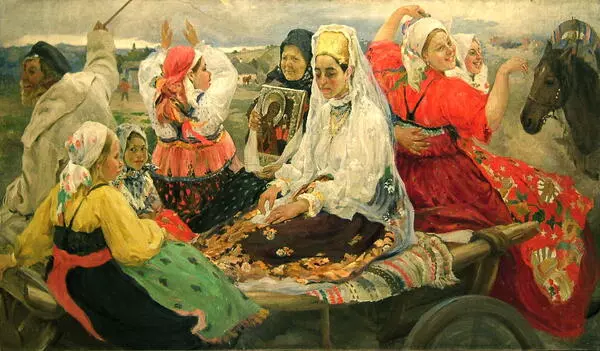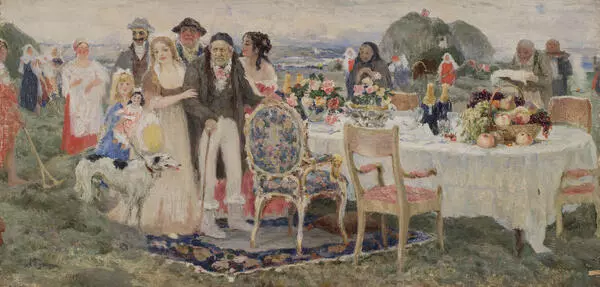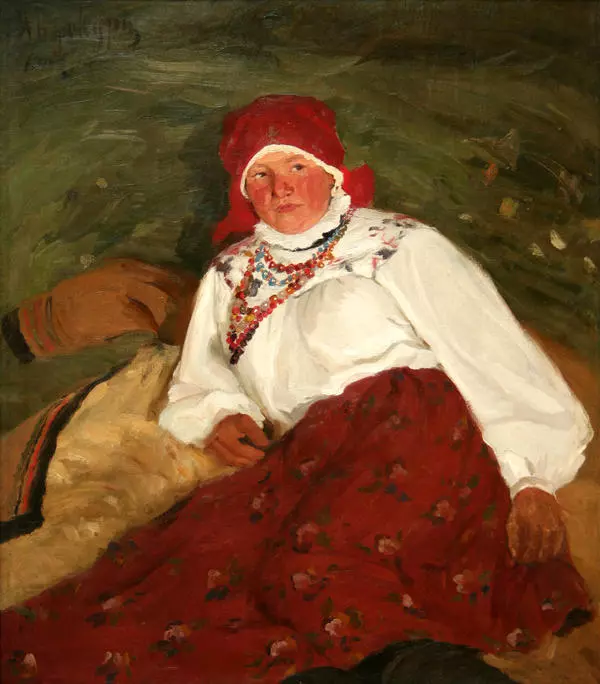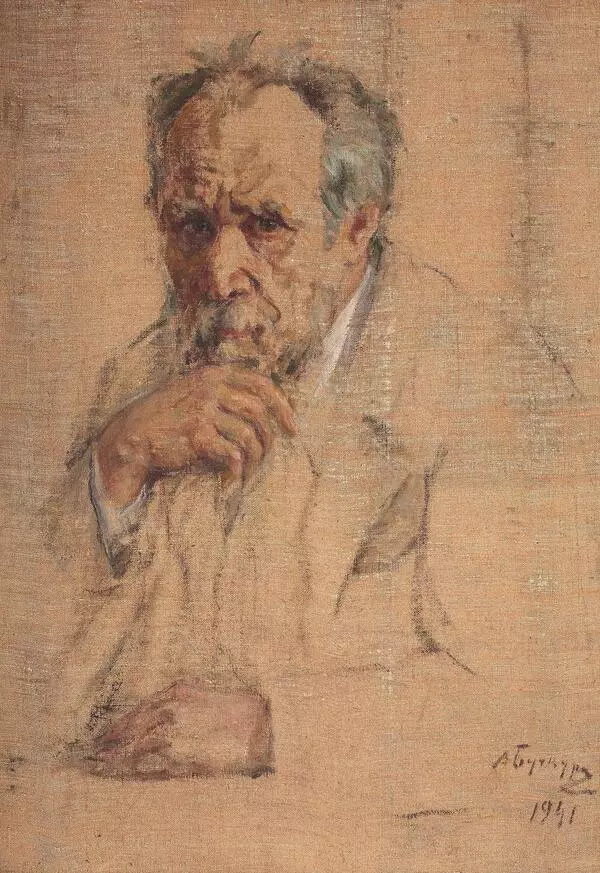Alexander Buchkuri was born in the Voronezh Governorate. He started painting from early childhood, and at the age of 12, he already worked as a tutor for the children of merchants. He received the unusual last name from his father, a Greek of Turkish descent. Buchkuri began his first formal education only at the age of 23 when a free drawing school was opened in Voronezh. Five years later, he decided to enter the Academy of Arts and contacted Ilya Repin directly. The famous artist looked at Buchkuri’s paintings and admitted him to the Academy as a non-matriculated student. Later, Repin wrote about Buchkuri,
Fair
Время создания
1916
Место создания
Voronezh, Russia
Размер
110x206 cm
Техника
canvas, oil
12
Открыть в приложении#2
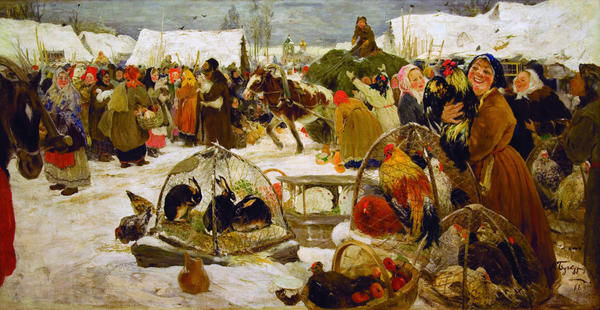
Alexander Buchkuri
Fair
#15
Paint in a simple manner. Pay attention and do not overcomplicate things. Paint as if it is the first time you do it. Do not be too proud and do not consider painting the truth of nature beneath yourself. Work tirelessly and ceaselessly day after day, and do not seek fame or profit.
Alexander Alexeyevich Buchkuri
#16
#17
He is a great painter, and I am proud of such a student.
#18
After studying in Saint Petersburg, Alexander Buchkuri returned to Voronezh. He lived at Skornyazhnyy Pereulok which was renamed after the painter in 1962. He was a teacher at an art school, art studios, and a college, gave private lessons, and developed the Regional Union of Artists.
Alexander Buchkuri took a keen interest in Russian traditions. He enjoyed listening to folk songs and tales, watching circle dances, and attending holidays and festivities. In his art, the painter represented the ideal of beauty of ordinary people, the celebration of life, and the play of color. His paintings “Fair”, “Funeral”, “Wedding Procession”, and “Christmas Market” provide a deep insight into the bygone era with its costumes and traditions.
Buchkuri created an entire series of portraits of countrywomen acknowledging the incredibly hard work that they were doing. In the heartrending painting “A Stroll” named after the short story by Maxim Gorky, the painter showed one of the cruelest Russian customs. If a woman was caught in adultery, she was brought out in the street naked and violently punished in public. The artist was disturbed by the helplessness of a woman and her inability to protect herself in any way. Alexander Buchkuri intended to use this painting as his final project at the Academy of Arts, but censors protested. The artist finished the painting thirty years later.
When German troops occupied Voronezh in 1942, they ordered civilians to leave the city. Alexander Buchkuri could not abandon his ill wife, and they both were shot dead. The artist’s studio and most of his paintings were burned down. The painter’s self-portrait created a year before the tragedy has survived to this day.
Alexander Buchkuri took a keen interest in Russian traditions. He enjoyed listening to folk songs and tales, watching circle dances, and attending holidays and festivities. In his art, the painter represented the ideal of beauty of ordinary people, the celebration of life, and the play of color. His paintings “Fair”, “Funeral”, “Wedding Procession”, and “Christmas Market” provide a deep insight into the bygone era with its costumes and traditions.
Buchkuri created an entire series of portraits of countrywomen acknowledging the incredibly hard work that they were doing. In the heartrending painting “A Stroll” named after the short story by Maxim Gorky, the painter showed one of the cruelest Russian customs. If a woman was caught in adultery, she was brought out in the street naked and violently punished in public. The artist was disturbed by the helplessness of a woman and her inability to protect herself in any way. Alexander Buchkuri intended to use this painting as his final project at the Academy of Arts, but censors protested. The artist finished the painting thirty years later.
When German troops occupied Voronezh in 1942, they ordered civilians to leave the city. Alexander Buchkuri could not abandon his ill wife, and they both were shot dead. The artist’s studio and most of his paintings were burned down. The painter’s self-portrait created a year before the tragedy has survived to this day.
#19
Ministry of Culture of the Russian Federation
читать дальшескрыть
00:00
00:00
1x
Fair
Время создания
1916
Место создания
Voronezh, Russia
Размер
110x206 cm
Техника
canvas, oil
12
Открыть в приложении
Поделиться



